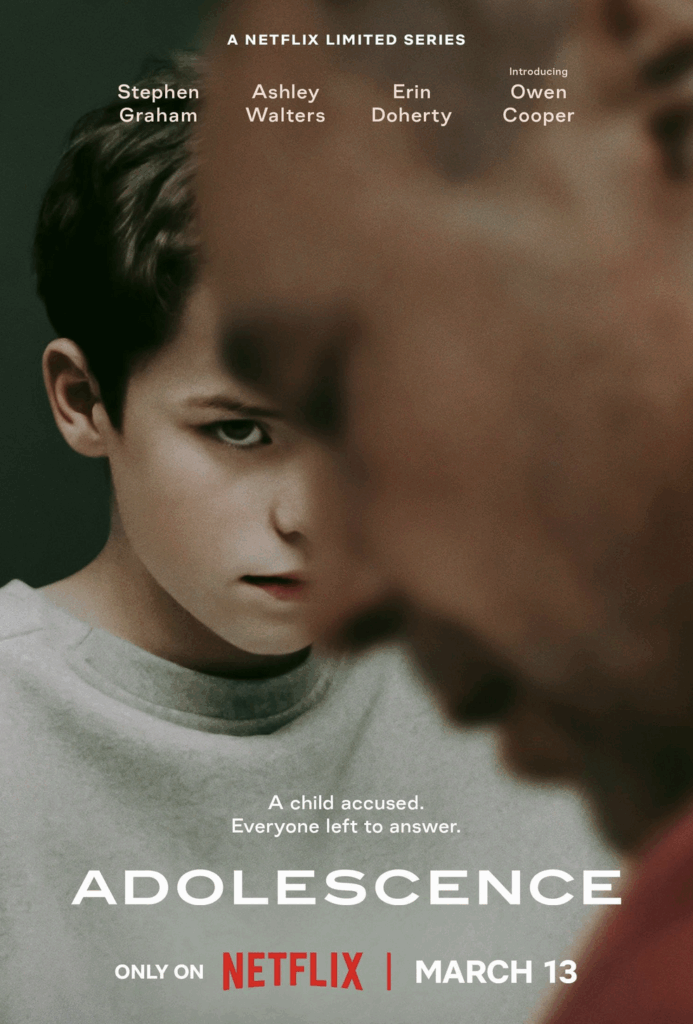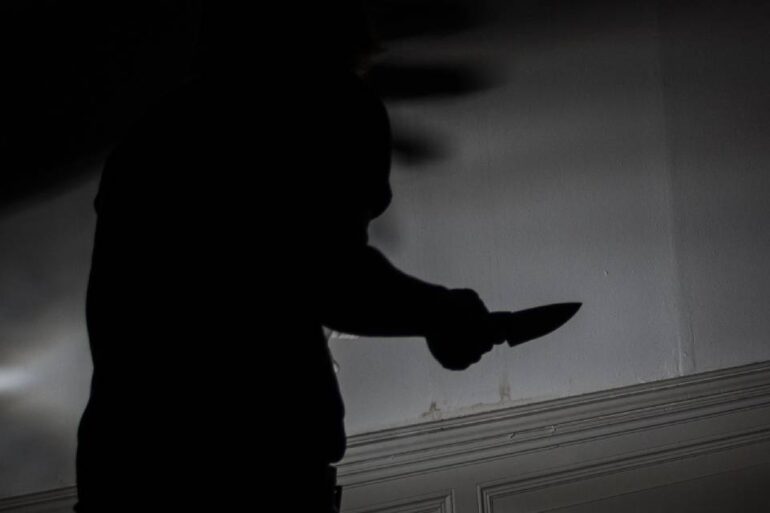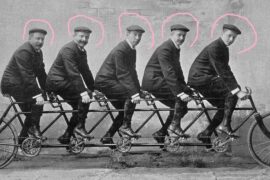Adolescence is a four-part mini series that masterfully examines the roots of male violence and toxic masculinity through the story of Katie’s murder. It’s a cautionary tale that unpacks social media radicalization, incel culture, and misogyny and its influences on impressionable young minds.
By Jenane Kharbachi
Picture: Via Pixabay (cropped), CC0
Adolescence is not your typical crime show, obsessed with gruesome details and whodunit twists, in fact, it’s not a mystery at all. It’s a social commentary on society’s conception of masculinity and its manifestation, particularly through the epidemic of male violence, not just in its physical sense, but through rape culture, misogyny, the manosphere and incel ideology. The show challenges viewers to observe the transpiring events with a critical eye, to read between the lines, and most importantly, to believe what they see when they see it without excuses, apologies or justifications.
From the outset, Jamie, a thirteen-year-old boy, is introduced abruptly and violently, as the police raid his bedroom and he’s left wetting himself in fear. Immediately, there is a sense of sympathy for this boy being treated with the same hostility reserved for dangerous criminals, with countless police officers shouting and tearing through his room. After all, what harm could a thirteen-year-old possibly do? But looks are deceiving, something dark is lurking in the shadows and when it comes to light, it will leave everyone stunned and in utter disbelief.
Episode 1: A Simple Misunderstanding
The Miller family’s life takes an unexpected turn when the police raid their home, and arrest their son, Jamie. Like the parents, the audience is kept in the dark regarding the reason for his arrest. All of them shot entirely in a single continuous take, the four-episode show immerses viewers in the chaos and confusion, drawing them into the family’s disbelief and emotional turmoil. Still, there is a lingering hope that it’s all a misunderstanding that will surely be cleared up soon.
At the police station, Jamie is arrested and processed in the system on suspicion of murder. As his father Eddie accompanies him through the legal process, it quickly becomes clear that Eddie is out of his depth, very uncertain and constantly turning to the solicitor for guidance and reassurance. The truth starts to slowly unravel into something far more unsettling; disturbing sexual social media activity, followed by CCTV footage of Jamie and Katie that challenges everything Eddie thought he knew about his son.
The footage at the end of the episode forces the audience, just like Jamie’s father Eddie, to confront the ugly truth. There is no misunderstanding, no other suspects, and no doubt about the identity of the murderer. A new reality suddenly sets in; a reality where Jamie is not the innocent boy he claims to be. The viewer must now contend with the emotional discomfort of this information, and acknowledge the actuality of the situation. For Eddie, this realization is devastating, not only because of what it means for his son’s future, but because he is also mourning the life of a young girl cut tragically too short, and questioning where he may have failed as a father. He believed he was raising a good boy, which makes it all the more incomprehensible in his mind that his own son could commit such a heinous act.
Episode 2: The Motive
The second episode shifts focus to Jamie’s secondary school, where detectives Luke and Misha attempt to question classmates to further understand what led to Katie’s murder. Jade, Katie’s best friend, is completely uncooperative, accusing the officers of implying that Katie is to blame for her own attack. Meanwhile, Ryan, Jamie’s friend, after initially running from police, admits that the knife used in the murder was actually his. He had lent it to Jamie so he could intimidate Katie into deleting her Instagram comments. These online remarks initially go unnoticed by the detectives, reflecting adults’ disconnect from the digital lives of teenagers and the consequences of this internet illiteracy. After watching his detective father fail over and over again to understand the crux of the issue, Luke’s son Adam, also a student at the school, explains to Luke the significance of Katie’s comments and their relation to online incel subculture.
The episode ends with a powerful, and devastating scene in which Jamie’s father visits the car park where Katie was murdered, leaving flowers in her memory. It’s a stark reminder that amid all the chaos Jamie left in his wake, an innocent life was violently taken, who deserves to be remembered and mourned. At its core, episode 2 serves as a foreshadowing of what’s to come. Names and terms such as Andrew Tate, incel, and red pill echo through the school halls, revealing the toxic digital environment students, especially boys are exposed to by controversial media personalities in recent years. The show does an exceptional job of immersing the viewer in the dark and chaotic world of adolescence, where bullying, misogyny and radicalization thrive, often unnoticed by digitally illiterate parents, who assume their children are safest in their own bedrooms, but as the series makes it clear, the threat does not always come from the outside.
Episode 3: A Look in the Eye of Modern Male Rage
Episode 3 introduces the character of Briony Ariston, a forensic psychologist tasked with assessing Jamie’s mental state ahead of his trial. What follows is arguably one of the best episodes in recent TV history, that unapologetically tackles the psychology of modern male rage. The brilliance of the episode is elevated by the raw performances of the two actors and the striking absence of music, which amplifies the tension and forces viewers to sit with the discomfort of every word. Throughout the episode, Jamie displays multiple violent outbursts, including a physical fight with another inmate over reasons he dismisses as unimportant. He also admits to feelings of inadequacy in the eyes of his father, who he believes is ashamed of him for being bad at football. When Briony questions him further regarding his father and masculinity, Jamie grows defensive, refusing to answer. He also admits that he regards himself as unattractive and undesirable to women, while simultaneously seeking Briony’s validation of his attractiveness.

Adolescence
Director: Philip Barantini
Written by: Jack Thorne and Stephen Graham
Release: 13 March 2025
At one point, in a chilling outburst, Jamie confesses to murdering Katie but not sexually assaulting her, claiming that makes him better than other boys who would have done so. Notably, he often says »he did nothing wrong« rather than claiming innocence, which is a revealing choice of words that suggests he truly believes killing Katie was justified. He also admits to asking his victim out despite saying that she was not his type, because he believed she would say yes after her nude photos were leaked at school. Katie in his eyes committed the ultimate offense, which is rejecting Jamie at what he perceived as her lowest moment and most vulnerable time. It confirmed his deeply ingrained incel beliefs specifically regarding the 80/20 rule, which suggests that 80% of women are only attracted to the top 20% of men. In his mind, if even a »low status« girl would not want him, what did that say about his worth?
The episode exposes how Jamie’s worldview has been warped by online subcultures that twist ordinary feelings of rejection, and desire for connection into resentment and entitlement. Within these websites, love and respect for women are framed as weakness and »simping«, while women themselves are dehumanized and reduced to inferior «femoids». This underlying resentment stems from the belief that women hold power over men simply by having the ability to reject them. Jamie himself demonstrates this in one of his outbursts towards Briony, saying »what the f** was that? signaling him away like a f*** queen, yeah?«. At the end of the episode when Briony informs Jamie that this would be their last session, all his bravado is suddenly stripped away, revealing what is behind his aggression as he asks »do you like me?«. It’s a rare glimpse into the truth, buried beneath layers of incel ideology and manosphere rhetoric, that poisons the minds of impressionable young boys, into thinking that emotions are a weakness and women are the enemy.
Episode 4: The Aftermath
The final episode picks up thirteen months after the murder, on Eddie’s fiftieth birthday. The family is trying to reclaim a sense of normalcy, but the day is quickly derailed when students from Jamie’s former school decide to vandalize Eddie’s van with a slur. To turn things around, Eddie decides to take his daughter and wife to the cinema later, but drags his family to a hardware store first to get new paint for the van. There, a young employee recognizes him and voices his support for Jamie. This encounter deeply unsettles Eddie who decides to leave the store quickly. Outside he spots the boys responsible for vandalizing his van, threatens them, then throws the dark blue paint all over his van in a fit of rage. While driving home, Jamie calls his father from prison to wish him a happy birthday and inform him that he will be pleading guilty. The emotional weight of the day drives Eddie and his wife to tears, as they reflect on where they may have gone wrong. Finally, alone in his son’s bedroom, Eddie breaks down, overcome with regret and helplessness, wishing that he could have done better as a father.
Adolescence stands out as an exceptional mini-series. The show never excuses Jamie’s actions or shifts the blame. It never glorifies the crime, instead it explicitly focuses on its motivations. While factors such as bullying and Eddie’s anger issues could have been an aggravating factor, the responsibility lies solely with Jamie. Nevertheless, the series implicitly urges viewers to confront a broad societal failure, such as lack of digital awareness of what teenagers are consuming online, and lack of emotional guidance to offset the toxic online spaces and figures like Andrew Tate preying on boys’ insecurities and radicalizing them. Adolescence is a must watch for parents, educators and young people alike, because it’s a cautionary tale that sadly, reflects a reality constantly unfolding before us and destroying the lives of everyone involved.






